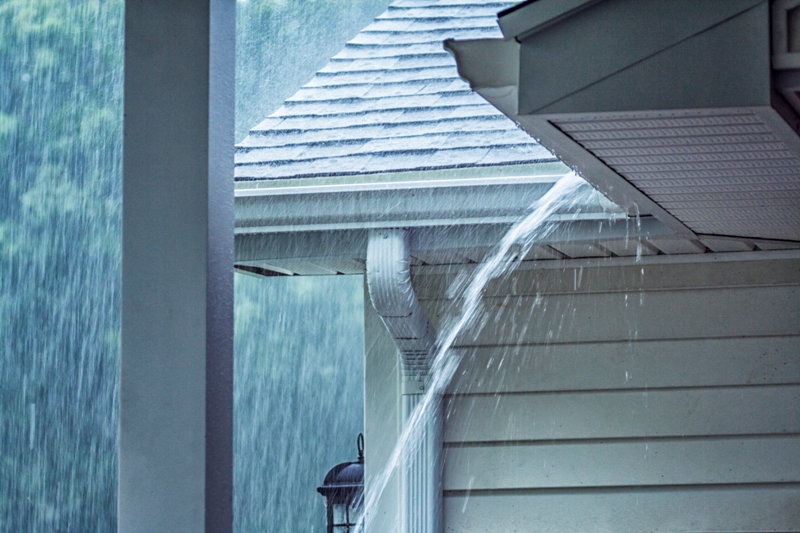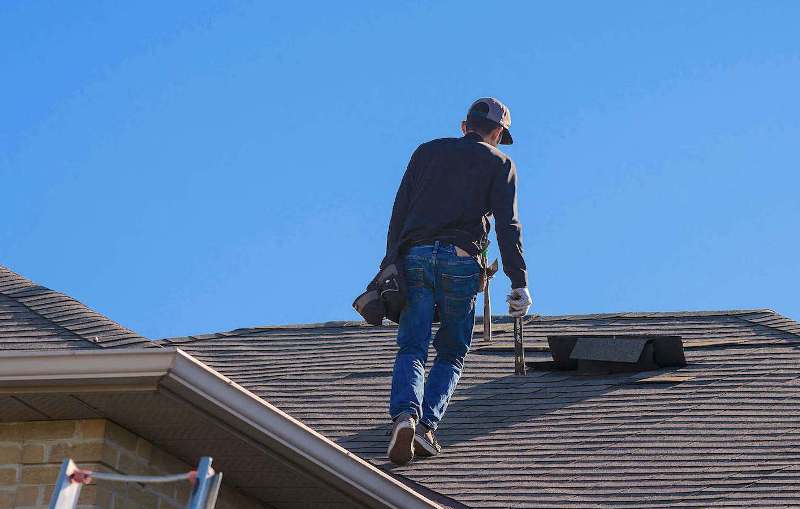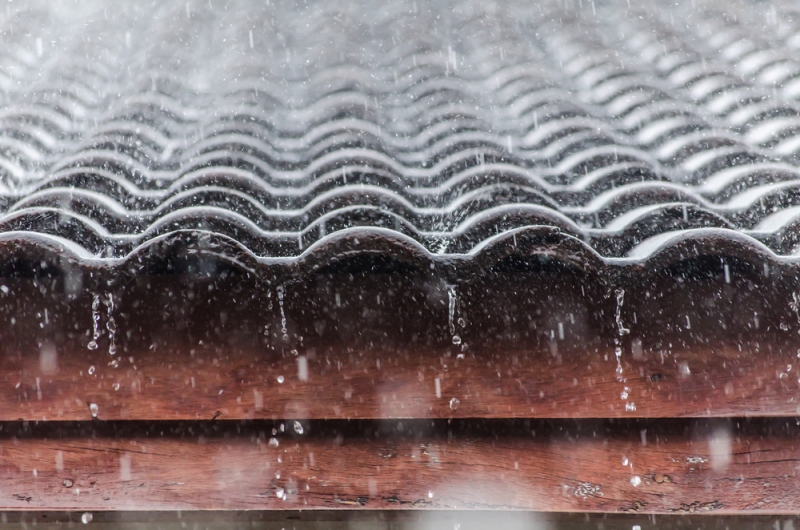Heavy rainfall can wreak havoc on your home. In many areas of the country, flooding is the leading cause of damage during a severe rainstorm, but it is by no means the only reason for concern. You must routinely inspect and maintain your roof to reduce the likelihood of water damage from a leaky roof.
Protect Your Roof From Water Damage

There are many ways you can protect your roof and keep water out of your home during a storm. Routinely trim any tree limbs that are close to the house or that hang over the roof. Limbs can break during strong winds and damage the siding and the roof. Tree limbs also hold on to water during a rainstorm. The water can continue to drip onto the roof long after a storm. When water pools on the roof it can encourage decay, which may lead to roof damage.
Make sure the chimney is hooded properly and inspect it periodically for cracks so that rain doesn’t have a chance to seep into the house. Roof vents should be designed with guards to keep water out of the attic. Inspect the shingles routinely for damage or missing materials. If your shingles are old, it may be time to have them replaced.
Gutters are an essential element in protecting your roof. Without gutters, water from the roof can gush down, damaging the siding and pooling around the foundation. To prevent heavy overflow during rainstorms, gutters should be inspected frequently to remove dirt, leaves and other debris. If you aren’t able to clean the gutters yourself, or you just don’t want to deal with the inconvenience, you should look into a gutter protection system.
There are many differences in gutter systems to keep in mind when choosing the right system for your house. Options to prevent leaves and dirt from getting into the gutters include gutter covers, guards and screens.
Gutter guards are molded directly onto the gutter channels. The guards block debris from getting into the gutters, and they direct the rain to flow into downspouts.
Gutter screens contain many small holes to allow for rain to flow through, but they prevent large debris from clogging the gutters. Some small debris is able to seep into the gutters, however, and screened filters still need to be cleaned periodically. It is critical to make sure the screens are tightened properly during installation to keep out debris and prevent them from breaking off during a heavy rainstorm.
Gutter cover installation is similar to that of gutter guards, except the gutter covers are curved instead of flat. The covers are designed to filter debris and keep much of the rain from gushing over the gutters.
Hire a Professional to Conduct a Roof Inspection

Even if you are able to inspect the roof yourself, it’s a good idea to have a roof inspector examine the roof once a year. A professional is trained to spot leaks and other issues before they become a serious problem.
The inspection typically encompasses several facets, including:
Structural – The roof planes are examined to ensure they aren’t sagging or uneven. The chimney and attic vents are inspected for cracks and other wear.
Interior – The inspector will check the interior walls and ceiling of your home for water stains and mold.
Material – The roof is inspected for loose or damaged shingles, flashing and other roofing materials. The inspector will also look for stains and rust.
After the inspection is completed, you will receive a report showing any areas of concern that need repair.
Keep your roof well-maintained all year long so that when a strong storm hits, your home is protected against devastating water damage.






